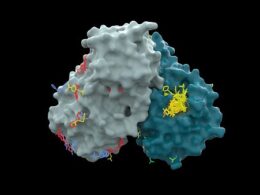As the highly transmissible Omicron variant spreads across the world, updating guidance to recommend their wider use could be one way to help reduce transmission.
Key messages (by the Editor of the blog)
- These high-grade masks significantly reduce covid-19 transmission
- America’s N95 and China’s KN95 masks provide similar levels of protection.
- Cloth or medical masks, on the other hand, merely disrupt the airflow of the speaker and trap the largest aerosol particles in their woven material.
- FFP2 masks are in healthy supply, and as the highly transmissible Omicron variant spreads across the world, updating guidance to recommend their wider use could be one way to help reduce transmission.
The Economist
Dec 16th 2021
IN CONTINENTAL EUROPE few people now wear cloth masks as protection against covid-19.
Instead, they don surgical or, increasingly, FFP2 masks, a highly efficient medical grade.
Meanwhile, in Britain and America, FFP2 coverings are less common.
What are these masks, and why are they not more widely used?
FFP stands for “filtering face piece”.
It is a European standard for mask efficiency, ranging from one, the lowest grade, to three, the highest.
FFP2 masks filter at least 94% of all aerosols, including airborne viruses such as covid-19.
America’s N95 and China’s KN95 masks provide similar levels of protection.
These disposable masks have several layers of different fabrics, including a polypropylene filter, made by “melt-blowing” polymer to create miniscule, irregular fibre patterns that can trap the smallest airborne particles.
A study published in December by the Max Planck Institute, a German research organisation, found well-fitting FFP2 masks reduced the risk of infection with covid-19 to 0.1%.
Cloth or medical masks, on the other hand, merely disrupt the airflow of the speaker and trap the largest aerosol particles in their woven material.
Their efficacy varies wildly depending on the design and fabric used: tight-fitting, multi-layered masks made from dense materials are much more effective than single-layer linen masks.
One study in the Journal of Education and Health Promotion found surgical masks were three times more effective at preventing inhalation of aerosols than homemade cloth ones.
Another study, in JAMA Internal Medicine, a journal, compared different cloth masks and found that their efficacy at containing viral particles ranged from 26% to 79%.
At the start of the pandemic, FFP2 masks were scarce and costly. Even governments fell victim to price gouging, paying more than €4 ($4.50) per mask.
Demand had previously been low, so stockpiles and production capacity could not satisfy the sudden surge. Governments wanted to reserve supplies for those most at risk of contracting the virus, such as health-care workers.
But production quickly expanded: China went from making 20m of the masks a day in January 2020 to almost 200m a day in March 2020.
They are now cheap and easy to obtain: in Europe they can be bought for less than €1. In Germany, the government began issuing them to people over the age of 60 in late 2020.
In Austria, FFP2 masks have been required in shops, museums and on public transport since January 2021, though current guidelines only apply to unvaccinated people.
In Britain and America officials say health-care workers should have prioritised access to FFP2 masks.
FFP2 masks are in healthy supply, and as the highly transmissible Omicron variant spreads across the world, updating guidance to recommend their wider use could be one way to help reduce transmission.
Originally published at https://www.economist.com on December 16, 2021.












